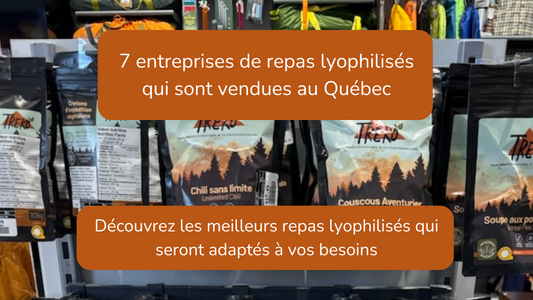Freeze-dried cabin beans in 4 questions

Share this blog post
Bines (or baked beans) are a classic of Quebec cuisine and we have made a freeze-dried version: Les Binnes de Cabane . Discover in this blog article everything you need to know about this meal in four questions.
How were these bins developed?
For the cabin bins, we were looking for a comforting meal that was also a traditional Quebec meal . We were looking for comfort, because when hiking, it is often at meal time that we need it.
It was also important to us to have this meal with few ingredients and that it was well balanced in terms of calories, proteins and carbohydrates .
Where does the name "Binnes de cabane" come from?
The name for these freeze-dried bines came to us quite easily. So, it was clear in our minds to use the term "binnes" and that this type of product is mainly eaten at the sugar shack.
We also decided to add an "n" in the word "bines" to add a little something different and a little out of the ordinary .

Who are your suppliers?
Freeze-dried cabin bins are made mostly from ingredients that are grown in Quebec. We use maple syrup from Érablière Pagé Savard in St-Alexis-des-Monts. Interestingly, they won the award for the best maple syrup in Quebec in 2021.
How can we prepare these freeze-dried beans?
The first method to prepare the cabin bins would be to simply mix it with hot water. However, we have discovered two additional methods of preparation:
Add cold water
Some explorers, due to lack of time and the desire to save weight, decide to eat their freeze-dried beans without using a burner. That is to say, they use the "Cold Soaking" method , which consists of putting cold water in the bag and letting it rest.
Add extra protein
Some hikers, in order to have as many nutrients as possible, add an extra protein such as smoked tempeh. This helps enhance the taste of this freeze-dried dish.










